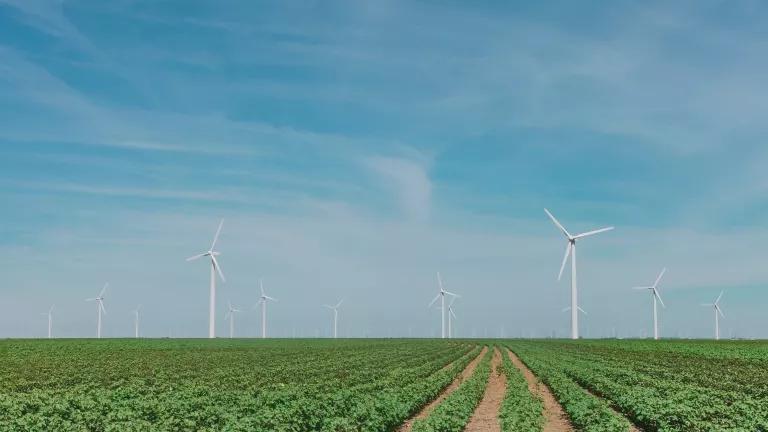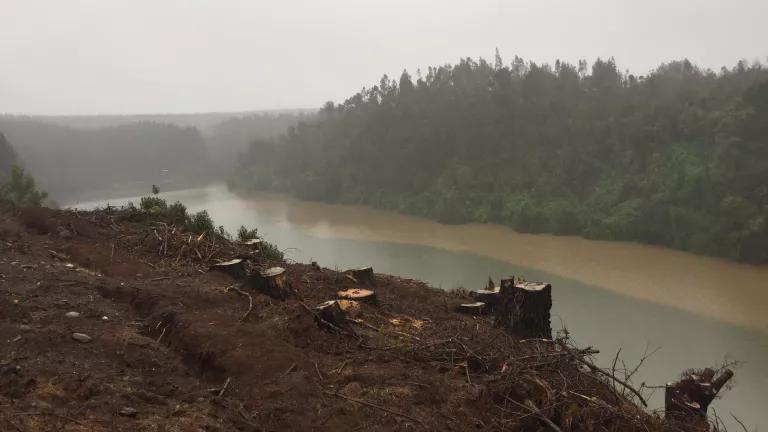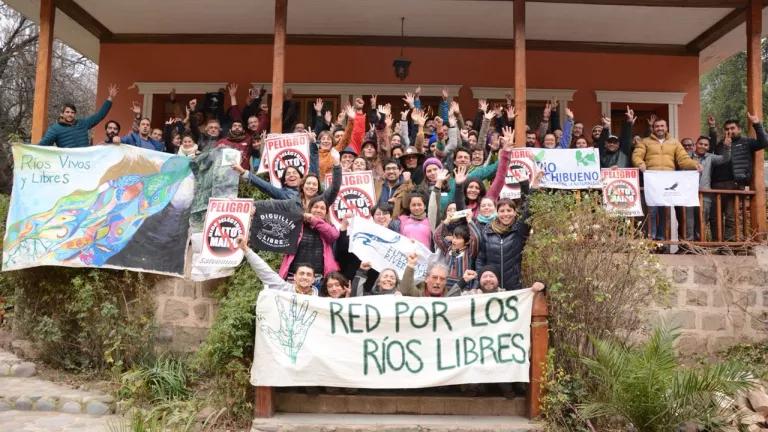World Water Day: Chile’s New Wave of River Protectors
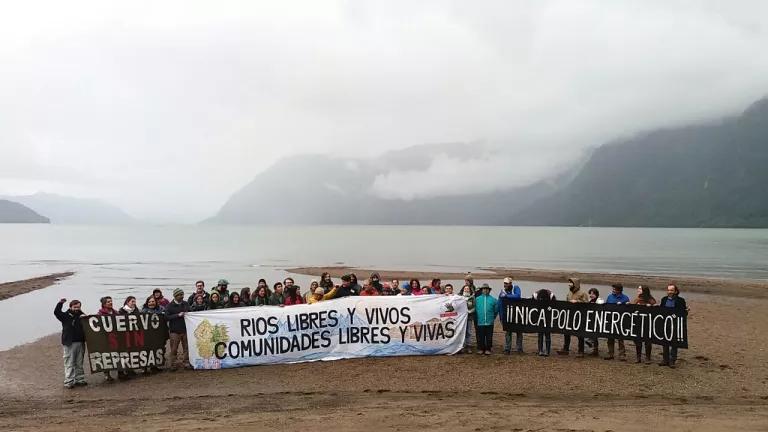
Today is World Water Day, in celebration of a common good that human societies have long understood as synonymous with life. Despite their vital importance for our ecosystems, watersheds around the world remain under threat from resource exploitation. Last week, as Chile’s conservative leader Sebastián Piñera was inaugurated as President for the second time, activists from all over the country regrouped in the Patagonian region of Aysén for the fifth summit of the Red por los Ríos Libres (Network for Free-Flowing Rivers). The three-day gathering brought together more than sixty representatives of local community groups, Indigenous leaders and youth, civil society organizations, journalists, scholars and international environmental NGOs. I was proud and grateful to participate on behalf of NRDC.
The meetings took place in the Patagonian towns of Coyhaique and Puerto Aysén. Since 2008, these key locations have been the home turf of the celebrated “Patagonia Sin Represas” (Patagonia Without Dams) movement. Through grassroots organizing and international mobilization, determined environmentalists defeated HidroAysén’s proposal to build five mega-dams on the Baker and Pascua Rivers on the one hand, and Energía Austral SpA’s three-dam power plant proposed on the Cuervo River on the other. Building on the momentum from recent favorable court decisions to protect rivers in Chile, activists descended on Patagonia from a vast array of other basins that have faced looming threats of large hydroelectric dam proposals, including: Puelo, Maipo, Ñuble, San Fabián, Palena, Futaleufu, Choapa, Claro, Achibueno and Teno Rivers.
Through oral presentations, collaborative sessions, music and spiritual ceremonies, members of the Red por los Ríos Libres shared their experiences of defending watersheds. Together, they formed a constellation of milestones from disparate struggles that have faced comparable challenges, and discussed opportunities to use this network as a platform to launch more successful conservation campaigns going forward.
The summit included a group visit to Bahía Acantilada in Puerto Aysén, a stunning fjord that Energía Austral had converted into a tourist destination, as part of its compensation package to the community for the devastating ecological harm it had planned. The park is now managed by the local municipality and serves as a symbol of the movement’s historic struggle to protect the Cuervo River. The weekend’s activities culminated in a festive music performance at “Los Chochos,” another park on the edge of Coyhaique that community members have reclaimed for public use.
Here are further details about two urgent campaigns featured in the summit.
A Citizens’ Energy Policy Proposal for Patagonia
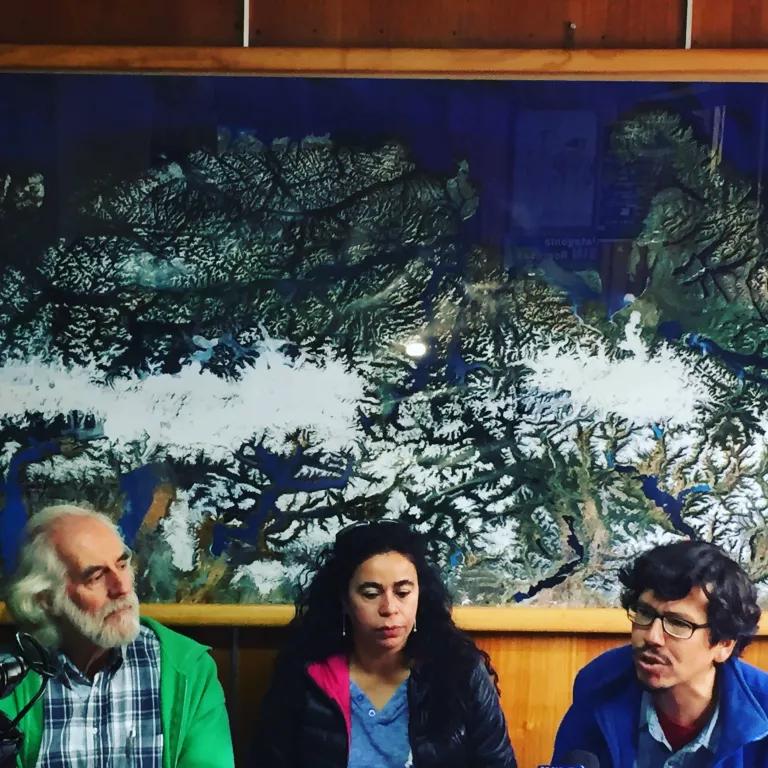
To kick off the summit, on Friday, March 9th local organizers in Coyhaique launched their vision for sustainable energy. The Propuesta Ciudadana de Política Energética (Citizens’ Energy Policy Proposal) is a grassroots response to the new regional energy policy for Aysén that Chile’s Ministry of Energy released just before the change in government. The latter has still not been signed and put into force, so the local coalition Aysén Reserva de Vida (Aysén Life Reserve) rolled up their sleeves and put together a proposal of their own.
Here is an animated video that explains the proposal in context.
Rooted in the principles of the Patagonia Sin Represas movement, the proposal acknowledges the region’s energy challenges. Aysén is disconnected from Chile’s national grid and needs to address its serious affliction of air pollution due to the fact that more than 40 percent of residential, commercial and public energy use derives from firewood. Moreover, local logs are wet and of poor quality in Aysén’s rainy capital of Coyhaique, in which 99.3 percent of households burn wood for heating and cooking.
Nonetheless, the Citizens’ Energy Policy Proposal refuses to accept the extractivist notion that proposed large hydroelectric dams might solve the region’s energy needs and public health problems. Rather, Aysén Reserva de Vida notes that such proposals would actually transform their region into a “sacrifice zone” for exporting natural resources to distant urban centers. Instead, the proposal demonstrates how by 2050, “the Region of Aysén can have a sustainable energy system based on non-conventional renewable energy that is diversified, autonomous, competitive and oriented toward the common good.”
Ñuble River at a Critical Conjuncture
While regions like Aysén give hope for a more sustainable future in Chile, the diversity of voices at the summit revealed how other areas are under clear and present danger. In the nascent province of Ñuble, in what is now the Andean foothills of Bío Bío in central Chile, the extraordinary nature and culture of the Ñuble and Los Sauces River watersheds face annihilation. A dual threat of the Punilla Hydroelectric power plant and irrigation project, as well as the Hidroñuble private run-of-the-river dam proposal, are under construction.
The Ñuble and Los Sauces River basins form part of the Nevados de Chillán Biological Corridor, a UNESCO Biosphere Reserve, and a habitat for huemuls (endangered Andean deer), pumas, condors and other myriad flora and fauna. The community of San Fabián de Alico comprises an historically-rooted community of arrieros (subsistence farmers loosely translated as muleskinners) and a thriving ecotourist economy for rafting and kayaking.
Yet, these social and environmental treasures would be evacuated in order to construct the massive Punilla reservoir of 600 million cubic meters (1,700 hectares), and a tower reaching 136 meters (446 feet) tall. The run-of-the-river Hidroñuble project alone would require an aqueduct 20 kilometers (12 miles) long. The land with which biodiverse species and local residents have developed deep relations would be submerged, displacing more than 130 families and putting the arrieros’ particular agrarian cultural practices at risk of elimination.
Here is another animated video that provides more information on these projects and the plight of the local stewards of San Fabián.
In response to these urgent threats, the Movimiento Social en Defensa del Río Ñuble (Social Movement in Defense of Ñuble River), known colloquially as Ñuble Libre (Free Ñuble), staged a peaceful, symbolic demonstration at the construction site in January. However, the local government has criminalized the protesters, who now face potential prison time. In defense of the action, a statement signed by more than 50 environmental groups, including NRDC, argued:
“The Punilla project is now entering a critical moment. Arrieros (muleskinners) working up in the mountains are being threatened every day with their impending expulsion, and the minimum conditions that had been guaranteed for those whose lands have been expropriated have not yet been fulfilled.”
Forging Ahead
The UN awarded Chile’s outgoing President Michelle Bachelet the title of Champion of the Earth for her environmental achievements, which included the establishment of a glorious network of new parks in Patagonia, thanks to a generous donation from Tompkins Conservation. However, the press has reported on now-President Piñera’s extensive network of former business partners who are interested in reviving hydroelectric energy proposals that have already been defeated.
Nonetheless, to Chile’s growing network of activists, rivers are the lifeblood of their territory, and the fight for water rights has only just begun.
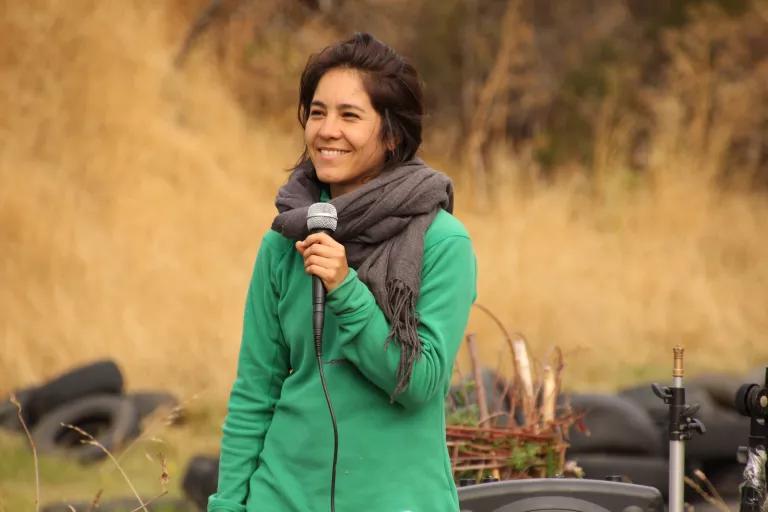
The sixth summit of the Red por los Ríos Libres is scheduled to occur in June in Cajón del Maipo, situated in the Metropolitan region. There, the embattled Alto Maipo large hydroelectric dam proposal poses another threat to the Maipo River, the main water supply for the nation’s capital, Santiago.
Want to learn more about the ongoing threat of hydroelectric energy development on rivers and biodiverse populations in Chilean Patagonia? Check out our interactive map.
